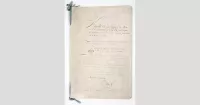Aruba is a constituent island country within the Kingdom of the Netherlands, located in the southern Caribbean Sea. Situated north of Venezuela and northwest of Curaçao, it became a constituent country within the Kingdom of the Netherlands in 1986, officially named the Country of Aruba.
1911: Low Rainfall
In 1911, Aruba experienced low rainfall due to strong El Niño years.
1912: Low Rainfall
In 1912, Aruba experienced low rainfall due to strong El Niño years.
1924: Salt extraction at Rancho
Around 1924, salt extraction at Rancho had limited benefits, primarily being used in the preservation of fish during shipping.
1924: Construction of Lago Oil and Transport Company
In 1924, the first oil refinery, Lago Oil and Transport Company, was built in San Nicolas as a subsidiary of Standard Oil.
1927: Establishment of Arend Petroleum Company
In 1927, the Arend Petroleum Company was established to the west of Oranjestad, to process crude oil from Venezuelan oil fields.
1930: Low Rainfall
In 1930, Aruba experienced low rainfall due to strong El Niño years.
1931: Low Rainfall
In 1931, Aruba experienced low rainfall due to strong El Niño years.
1933: High Rainfall
In 1933, Aruba experienced high rainfall due to La Niña years.
1934: High Rainfall
In 1934, Aruba experienced high rainfall due to La Niña years.
1940: Oil facilities under Dutch government control
In 1940, the oil facilities in Aruba came under the administration of the Dutch government-in-exile in London.
1942: German navy attacks oil facilities
In 1942, the oil facilities in Aruba came under attack by the German navy.
August 1947: Aruba formulates first staatsreglement
In August 1947, Aruba formulated its first staatsreglement (constitution) for Aruba's status aparte as an autonomous state within the Kingdom of the Netherlands, prompted by the efforts of Henny Eman.
1949: Paardenbaai salt pans disappear
In 1949, Paardenbaai (Horses' Bay) contained salt pans up until 1949 when it was dredged and disappeared beneath the sand.
1954: Establishment of the Charter of the Kingdom of the Netherlands
In 1954, the Charter of the Kingdom of the Netherlands was established, providing a framework for relations between Aruba and the rest of the kingdom, and creating the Netherlands Antilles.
1958: Construction of Lourdes grotto
The Lourdes grotto was constructed in 1958 by a priest named Erkamp and his parishioners.
1970: High Rainfall
In 1970, Aruba experienced high rainfall due to La Niña years.
1971: High Rainfall
In 1971, Aruba experienced high rainfall due to La Niña years.
1972: Betico Croes proposes Dutch Commonwealth
In 1972, at a conference in Suriname, Aruban politician Betico Croes proposed the creation of a Dutch Commonwealth of four states.
1972: Population Fluctuation
The population of Aruba experienced fluctuations between 1972 and 2022, primarily influenced by net migration.
1976: Adoption of flag and anthem
In 1976 Aruba adopted the trappings of an independent state with the creation of a flag and a national anthem.
March 1977: Referendum for independence
In March 1977, a referendum was held with the support of the United Nations, with 82% of participants voting for complete independence from the Netherlands.
1978: Study for independence
In 1978, the Institute of Social Studies in The Hague prepared a study for independence, entitled Aruba en Onafhankelijkheid, achtergronden, modaliteiten, en mogelijkheden; een rapport in eerste aanleg (Aruba and independence, backgrounds, modalities, and opportunities; a preliminary report).
1982: Low Rainfall
In 1982, Aruba experienced low rainfall due to strong El Niño years.
March 1983: Official agreement for independence
In March 1983 Aruba reached an official agreement within the kingdom for its independence.
1983: Low Rainfall
In 1983, Aruba experienced low rainfall due to strong El Niño years.
August 1985: Drafting of Aruba's constitution
In August 1985, Aruba drafted a constitution that was unanimously approved.
1985: Closure of Aruba's oil refinery
In 1985, Aruba's oil refinery closed, which had provided a significant portion of the island's income and government revenue, leading to a push for increased tourism.
January 1986: Aruba secedes from Netherlands Antilles
On January 1, 1986, Aruba seceded from the Netherlands Antilles, officially becoming a country of the Kingdom of the Netherlands.
1986: Aruba becomes a constituent country
In 1986, Aruba became a constituent country within the Kingdom of the Netherlands, officially becoming the Country of Aruba.
1988: Population Nearly Doubles
Between 1988 and 2016, the population of Aruba nearly doubled.
1988: High Rainfall
In 1988, Aruba experienced high rainfall due to La Niña years.
1989: High Rainfall
In 1989, Aruba experienced high rainfall due to La Niña years.
1990: Forest Cover Unchanged
In 1990, Aruba had around 420 hectares of forest. This was unchanged as of 2020.
1990: Postponement of transition to full independence
In 1990, at a convention in The Hague, the governments of Aruba, the Netherlands, and the Netherlands Antilles postponed indefinitely Aruba's transition to full independence at the request of Prime Minister Nelson Oduber.
1995: Rescinding of full independence schedule
In 1995, the article scheduling Aruba's complete independence was rescinded, although it was decided that the process could be revived after another referendum.
1996: Full independence planned
Full independence was planned for Aruba in 1996.
1997: Low Rainfall
In 1997, Aruba experienced low rainfall due to strong El Niño years.
1998: Low Rainfall
In 1998, Aruba experienced low rainfall due to strong El Niño years.
1999: US Department of Defense
In 1999 the US Department of Defense established a forward operating site the airport.
2000: Dating of archaic tools
Around 2000 BC, the finishing techniques and shape of an archaic tool found at Sero Muskita resembled one found at Arikok, suggesting that they date before approximately 2000 BC.
2000: Establishment of Arikok National Park
In 2000, the Arikok National Park was established as formal conservation land, covering 20% of the island.
2003: Establishment of Aruba Conservation Foundation
In 2003, the Aruba Conservation Foundation was established to oversee the conservation management of protected areas.
2005: Diversity of Nationalities
In 2005, Aruba was home to people from 92 different nationalities, according to the Bureau Burgelijke Stand en Bevolkingsregister (BBSB).
2006: Government debt and tax law changes
By 2006, the government's debt had grown to 1.883 billion Aruban florins. In 2006, the government changed several tax laws to reduce the deficit.
2008: Pre-clearance facility for private flights
Since 2008, Aruba has been the only island to offer US Customs and Border Protection pre-clearance for private flights bound for the United States.
December 2009: Commissioning of Vader Piet Wind Farm
In December 2009, the Vader Piet Wind Farm was commissioned in Aruba with a capacity of 30 MW, producing a significant portion of Aruba's electricity.
2009: Netherlands discontinues development aid
Until 2009, the Netherlands granted development aid to Aruba; this aid was discontinued at Aruba's request in 2009.
July 2010: Law Enforcement Council
As of July 7, 2010 with the Kingdom Act on the Law Enforcement Council, Aruba is not part of the Law Enforcement Council (Raad van de Rechtshandhaving).
2013: No Published Unemployment Statistics
The government of Aruba has not published unemployment statistics since 2013.
2015: Financial supervision reintroduced
Since 2015, a form of financial supervision has been reintroduced in Aruba because debt has risen sharply to over 80% of GDP.
2016: Population Nearly Doubles
Between 1988 and 2016, the population of Aruba nearly doubled.
2016: Biocapacity Statistics
In 2016, Aruba had 0.57 global hectares of biocapacity per person within its territory, much less than the world average of 1.6 global hectares per person, while using 6.5 global hectares of biocapacity per person.
2017: Population Decline
In 2017, a decline occurred in Aruba's population, breaking almost three decades of continuous growth.
2017: GDP per capita
The GDP per capita (PPP) was estimated to be $37,500 in 2017 in Aruba.
2018: Labor force participation rate
At the end of 2018, the labour force participation rate was 56.6% for women in Aruba.
2018: Tourism Statistics
In 2018, Aruba's tourism industry saw 1,082,000 overnight tourists, contributing to 75% of the gross national product. North America accounted for 73.3% of tourists, followed by Latin America with 15.2% and Europe with 8.3%. The Netherlands contributed 40,231 visitors in 2018.
2018: Opening of Sunrise Solar Park
In 2018, the Sunrise Solar Park was installed and opened in Aruba.
2019: Venezuelan refugees
In 2019, recently arrived Venezuelan refugees were estimated to number around 17,000 on Aruba, accounting for some 15% of the population.
2020: Population Statistics
As of 2020, the population nationality is estimated to be 78.7% Dutch, 6.6% Colombian, 5.5% Venezuelan, 2.8% Dominican; 1.3% Haitian, and 5.1% from other backgrounds.
2020: Forest Cover
In 2020, Aruba had around 420 hectares of forest. This was unchanged from 1990.
2020: Island affected by hurricanes
Late in the 2020 Atlantic hurricane season, the island of Aruba was affected by two hurricanes in their early stages.
2022: Forest covered land area
As of 2022, Aruba only has 2.3% of forest-covered land area and only 0.5% of protected natural area.
2022: Population Fluctuation
The population of Aruba experienced fluctuations between 1972 and 2022, primarily influenced by net migration.
2025: Population Growth
As of the 1st quarter in 2025, the population of Aruba stood at 108,880 people, marking a modest 0.4% growth compared to the previous year, driven by a significant rise in immigration.
Mentioned in this timeline
Suriname located in northern South America and sometimes considered part...
The modern Olympic Games are a leading international sporting event...
The Netherlands is a country located in Northwestern Europe and...

A constitution serves as the foundational legal document for any...
A national park is a protected area designated by a...
Trending
23 days ago WCAX Viewers Affected by DISH Network Technical Issues and Heavy Mountain Snow

2 months ago Tiwa Savage apologizes for Tyla's remarks, sparking online backlash and 'coloured' identity row.

7 months ago George Wendt, 'Cheers' Star, Remembered Fondly After Death; Sudeikis Shares Memory

7 months ago Ashton Kutcher and Mila Kunis's bathing habits spark debate; Taylor met the couple.

28 days ago Stallone Protected Himself with Body Armor for Snipes' Intense 'Demolition Man' Performance.

8 months ago Astronauts Capture Dazzling Aurora Displays Over Earth from the International Space Station
Popular
Matt and Ross Duffer known as the Duffer Brothers are...

Candace Owens is an American conservative political commentator and author...

XXXTentacion born Jahseh Dwayne Ricardo Onfroy was a controversial yet...

Ilhan Omar is an American politician currently serving as the...

Tom Cotton is an American politician and Army veteran currently...
The Kennedy Center Honors are annual awards recognizing individuals and...